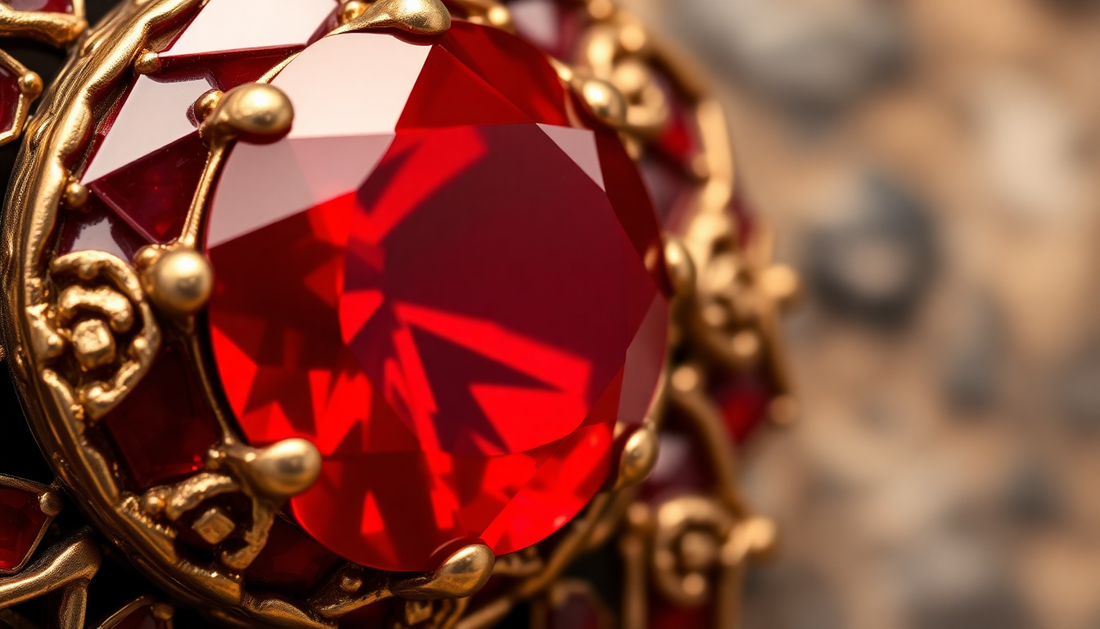
The Fascinating History and Significance of the Timur Ruby: A Jewel of the Crown
Share
Introduction
The Timur Ruby, a jewel of extraordinary beauty and historical significance, has captivated people for centuries. Known for its remarkable size and rich history, this gemstone is not actually a ruby but a spinel, often referred to as the 'Timur Ruby' in modern times. This blog post will explore the intriguing history and significance of the Timur Ruby, shedding light on its journey through empires, its cultural importance, and its place in the British Crown Jewels.
The Origins of the Timur Ruby
Dating back to the 14th century, the Timur Ruby is believed to have originated in the region of Central Asia. The gemstone is named after the infamous conqueror Timur, also known as Tamerlane, who founded the Timurid Empire. However, the story of the Timur Ruby is much more complex:
- Timur's Legacy: Timur was known for his military prowess and his role in establishing a vast empire that stretched across Central Asia and into the Middle East. His reign was marked by significant cultural and artistic achievements, and as a result, he was often depicted as a patron of the arts.
- Gemstone Inscription: The inscription on the gemstone indicates it was part of a collection belonging to a Sultan in the 18th century, highlighting its value not just as a piece of adornment but as a historical artifact.
- Historical Ownership: Several historical figures, including Mughal emperors and Sikh rulers, have been linked with the ownership of the gemstone, making it a significant artifact in the tapestry of South Asian history.
The Journey Through Time
The Timur Ruby has traveled through various empires, symbolizing power and wealth. Its journey can be summarized as follows:
- Timurid and Mughal Empires: The gem's early history is intertwined with the rulers of the Timurid and Mughal empires, known for their patronage of the arts and gemstones. The Mughal emperors, in particular, were renowned for their opulence and lavish lifestyles, often adorning themselves with exquisite jewels.
- British East India Company: In the mid-19th century, the gemstone came into the possession of the British East India Company after the fall of the Sikh Empire. The political turmoil of the time led to the transfer of many valuable treasures to British hands, including the Timur Ruby.
- Inclusion in the British Crown Jewels: The Timur Ruby was presented to Queen Victoria in 1851 and has since been featured in various royal regalia. Its inclusion in the Crown Jewels not only solidified its status as a significant historical artifact but also highlighted the British monarchy's connection to imperial history.
Significance in the Crown Jewels
Today, the Timur Ruby is one of the most significant pieces in the British Crown Jewels. Its importance can be attributed to:
- Historical Legacy: The gem represents the rich history of imperial conquests and the blending of cultures. Its journey from the East to the West reflects the intricacies of colonialism and the exchange of cultural artifacts.
- Cultural Symbol: It symbolizes the power struggles and alliances formed through the centuries. The ruby's ownership has changed hands multiple times, making it a living testament to the geopolitical shifts in the region.
- Artistic Value: The craftsmanship and design of the setting enhance its allure, showcasing the artistry of the period. The intricate settings and designs that accompany the gem illustrate the technological advancements in jewel crafting during the time.
- Connection to Royalty: The Timur Ruby has been worn by various monarchs and is often associated with royal power and authority. Its presence in the Crown Jewels signifies its importance in ceremonial occasions and royal events.
The Ruby vs Spinel Debate
Interestingly, the gemstone known as the Timur Ruby is actually a spinel, not a ruby. This confusion is common due to historical naming conventions:
- Color and Appearance: Both rubies and spinels share a similar red hue, which often leads to misidentification.
- Historical Documentation: The term 'ruby' has been historically applied to various red gemstones, causing further confusion regarding identification.
- Modern Understanding: Today, gemologists use advanced techniques to accurately identify gemstones, allowing for a clear distinction between rubies and spinels.
Modern Day Significance
The Timur Ruby remains a focal point of interest not only for historians and gemologists but also for those fascinated by royal history. Its presence in popular culture and continued significance in the Crown Jewels ensures that it remains relevant:
- Tourist Attraction: The British Crown Jewels, including the Timur Ruby, attract millions of visitors to the Tower of London each year, allowing people to connect with history through these remarkable artifacts.
- Symbol of Heritage: For many, the Timur Ruby represents a connection to a rich historical narrative, symbolizing the complex interplay of cultures and histories.
- Inspiration for Art and Literature: The mystique surrounding the Timur Ruby has inspired various works of art and literature, further embedding it in cultural consciousness.
Conclusion
The Timur Ruby is more than just a beautiful gemstone; it is a testament to the complex history of empires, conquests, and cultural exchanges. As it continues to be a part of the British Crown Jewels, its story remains a significant chapter in the history of gemstones, reflecting the values and artistry of the times it has witnessed. Whether you are a gemstone enthusiast or a history buff, the Timur Ruby offers a fascinating glimpse into the past and the timeless allure of precious stones.
As we admire the beauty of the Timur Ruby, we are reminded of the intricate narratives that gemstones carry with them, encapsulating not just their physical beauty but the stories of the people and cultures that valued them throughout history. In doing so, we celebrate not just the jewel itself, but the rich tapestry of human experience it represents.